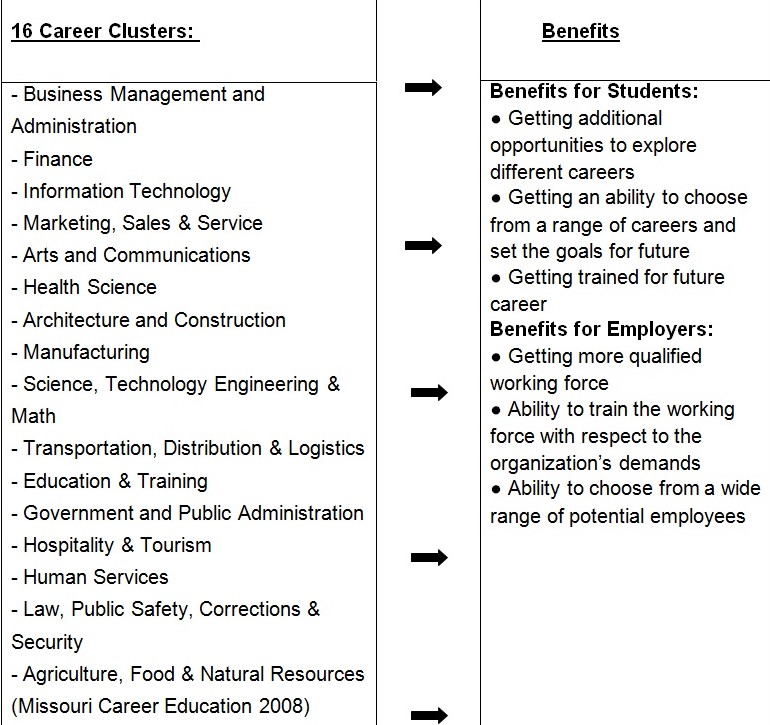Introduction
Curriculum for career education demands special attention on the part of the instructors. A number of factors, such as students’ qualification, their current knowledge, students’ career goals and objectives, etc. have to be taken into account when designing the curriculum and setting the educational goals. Outlining Scope and Sequence of the studies on the basis of the career clusters makes it possible to assess the needs of the students and further use the assessment procedures to revise and improve the curriculum.
Scope and Sequence
The development of the Scope and Sequence for business studies, for instance, should begin with dividing the plan into two major parts, the first semester and the second semester. The first semester is going to cover theoretical issues and preparation of the students for the business careers. First of all, there should be an introduction to major business issues, such as organizational aims, business environment, finances, production, marketing, etc. Secondly, with respect to these issues, the students will be required to choose a sphere of their greatest interest (commercial, marketing, finances, etc). Then, basing on their choices, the educational goals for the students will be formed with major activities for the coming semester being outlined. These are going to include compiling resumes (or cover letters), job applications, possibly interviewing, and scheduling the classes depending on the skills which a particular career requires. The second semester, in its turn, will cover other career-related issues. It will begin with deeper studying of the chosen business areas. Thus, in case with choosing finances, the students will be lectured on capital, cash and capital budget, credit policies, accounting, etc. Together with this, they will be learning about workplace ethics, social security, self-knowledge, etc. The semester will end with setting employment goals and defining future careers, as well as possibilities of career development. The Scope and Sequence can be modified in the process of studies, but the changes should be minor and primary objectives should be preserved. Business Education classes should be optional and take place no less then three times a week after general education classes (or before them, if there is such a possibility). This will help the students develop their knowledge in business studies together with general knowledge.
Career Cluster Brochure

The Use of Assessment Data in Revising Curriculum
The assessment data can contribute greatly into the improvement of the curriculum. Firstly, these data can be used to find out the teachers’ ideas regarding the students’ areas of weakness (for instance, the data will show lower grades in a particular course). Taking into account these data, it will be possible to place special emphasis on a definite subject and rearrange the curriculum respectively. Secondly, on the basis of the assessment data the admission criteria can be revised. The result of this will be the enrollment of more qualified students and revising of the curriculum with respect to their knowledge and educational needs.
Instructional Management System (Competency Folders)
Business Economics Competency Profile is of the greatest interest to me because it gives a perfect idea of how competencies can be used in the classroom and helps to realize their contributions into the improvement of the curriculum. A convenient grading system (from 1 to 3) allows evaluating each student’s understanding of a particular subject and points at the gaps in his/her knowledge. If the majority of students fail to understand a definite topic (for instance, production), this kind of assessment will help to improve the curriculum; the result of the assessment will be sparing out more time for this topic.
Conclusion
Compiling a curriculum is a challenging task because the needs of each student should be taken into account. However, there are numerous means which can facilitate the fulfillment of this task. If Scope and Sequence of the studies are identified, it is easier to formulate the students’ objectives and schedule the classes according to them. Different assessment means can then help to find out weaknesses of the curriculum and improve it correspondingly.
Work Cited
Missouri Career Education. Department of Elementary and Secondary Education, 2009. Web.